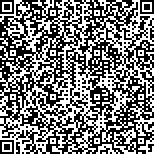下载中心
优秀审稿专家
优秀论文
相关链接
摘要

全球电离层分布特别是f0F2和hmF2对雷达探测、无线电通信以及卫星导航等有非常大的影响,为研究全球f0F2和hmF2的时空分布,利用全球导航卫星定位系统(GNSS)掩星数据统计分析了全球f0F2和hmF2的周年变化特性、日变化特性以及季节变化特性,并通过与日本地区测高仪站f0F2数据进行对比,分析了两种探测方式获取电离层参数的相关性。结果表明,全球f0F2和hmF2周年变化与太阳活动和地磁活动具有明显的正相关性,f0F2和hmF2还具有明显的空间分布特性。此外,全球f0F2和hmF2峰值出现在LT 14:00—16:00期间,且hmF2出现明显的日落后赤道电离异常复苏现象。全球f0F2具有比较明显的季节变化特性,f0F2峰值出现在春秋季中低纬地区,在夏冬季较小,且出现比较明显的冬季异常现象,而hmF2季节分布相比f0F2并不明显。通过和日本地区Wakkanai、Kokubunji、Yamagawa以及Okinawa测高仪站f0F2数据对比,发现两种探测手段获取的电离层参数具有较好的相关性。初步研究表明,全球f0F2和hmF2分布受到多种因素的影响,其中太阳活动和地磁活动占主要地位,其次是电场、热层风以及高能粒子沉降等。
The ionosphere is an atmospheric region ionized by solar radiation, cosmic rays, and various particle radiations ranging from 60 km to 1000 km above the earth. Numerous free electrons and ions in the ionosphere can interfere with radio signals. Ionospheric parameters, especially F2 layer critical frequency (f0F2) and electron density peak height (hmF2), play an important role in the propagation of HF waves. Therefore, the study of f0F2 and hmF2, especially its global distribution, is important.
The overall objective of this paper is to study the annual, diurnal, and seasonal variations of f0F2 and hmF2 in the world on the basis of GNSS occulation datasets and to compare the values f0F2 obtained by GNSS occultation and digisondes from all stations in Japan.
COSMIC, GRACE, and CHAMP electron density profile datasets and digisonde datasets in Wakkanai, Kokubunji, Yamagawa, and Okinawa for 2002—2016 are selected as the data sources. The maximum electron density NmF2 and hmF2 is obtained by using the electron density profile. Compared with ionosonde f0F2 datasets, the latitude and longitude of the selected NmF2 are within 5 degrees of ionosondes, and the time of the selected NmF2 is within 15 minutes of ionosondes.
Results show that the annual variation of f0F2 and hmF2 has a significant positive correlation with solar activity and geomagnetic activity and significant spatial distribution characteristics. The maximum value of f0F2 distribution on both sides of the magnetic equator is approximately 15 degrees, and the maximum value of hmF2 distribution in the equatorial region and the northern and southern hemisphere peak heights is not symmetrical. In addition, the peak value of f0F2 and hmF2 appears during LT 14:00—16:00, and hmF2 exhibits significant equatorial ionization anomaly recovery after sunset. The f0F2 has obvious seasonal characteristics; the peak value of f0F2 appears in spring and autumn at middle and low latitudes, and is evident in abnormal winter phenomenon. However, the seasonal distribution of hmF2 evidently change. The values f0F2, which were obtained by occultation and digisondes from all stations in Japan, were compared, and results indicate that the ionospheric parameters obtained by the two detection methods have acceptable correlation. The correlation in the Okinawa station is the best, with a correlation coefficient of 0.88. The correlation in the Wakkanai station is poor, with a correlation coefficient of 0.75. The correlation between Yamagawa and Kokubunji stations is close at 0.84 and 0.85, respectively.
The preliminary study shows that the global f0F2 and hmF2 distribution is affected by many factors, including solar activity, geomagnetic activity, electric field, and wind and high-energy particle sedimentation.
The values f0F2 obtained by occultation and digisondes from all stations in Japan were compared, and results show that the ionospheric parameters obtained by the two detection methods have acceptable correlation. However, some evident differences were observed; these differences may be due to the electron density gradient and satellite retrieval technology.

